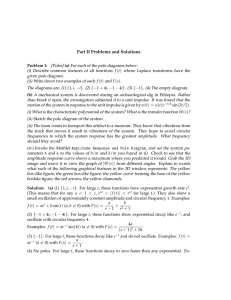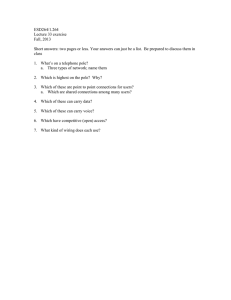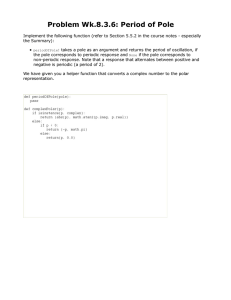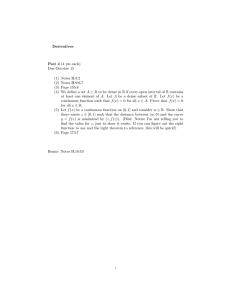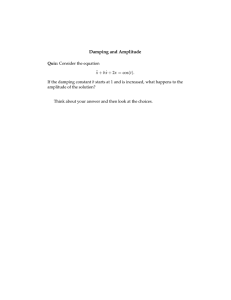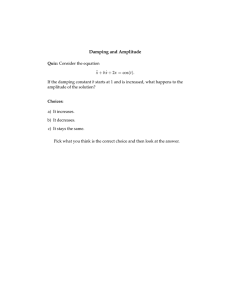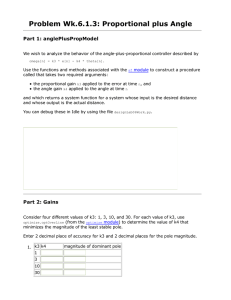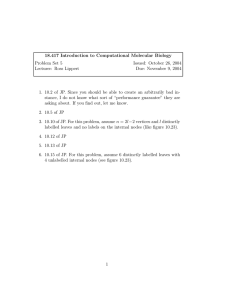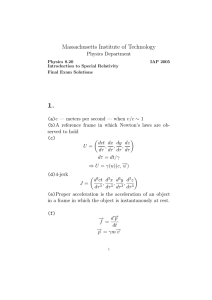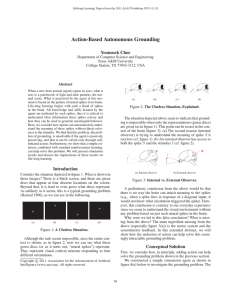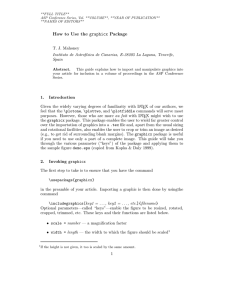Part ( )
advertisement
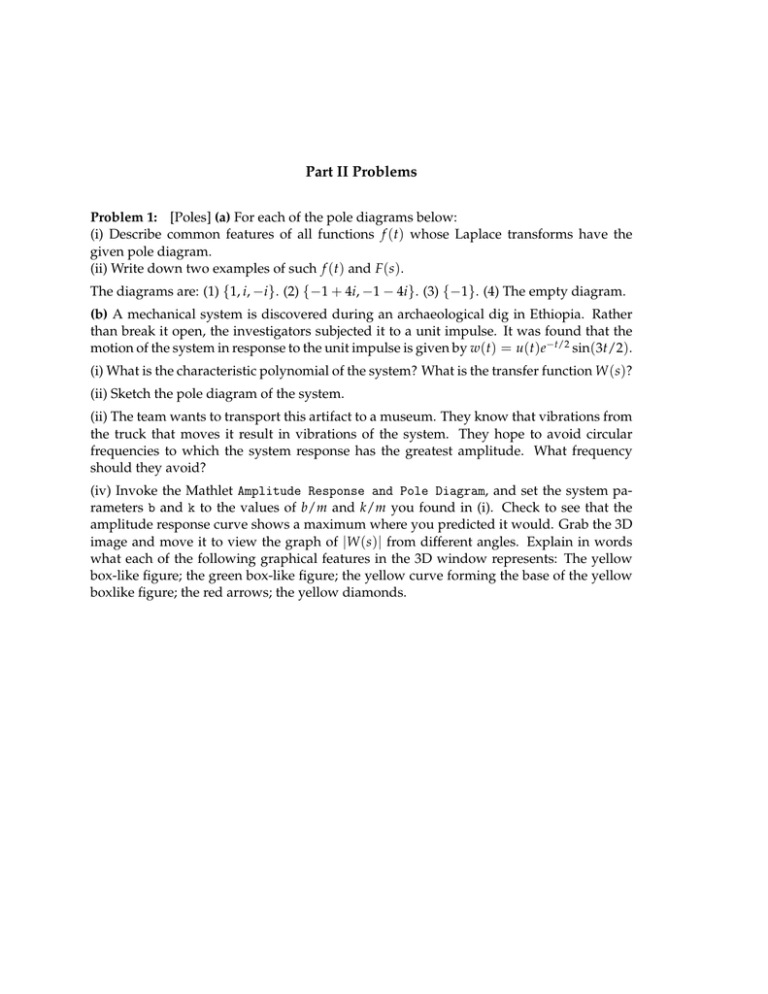
Part II Problems
Problem 1: [Poles] (a) For each of the pole diagrams below:
(i) Describe common features of all functions f (t) whose Laplace transforms have the
given pole diagram.
(ii) Write down two examples of such f (t) and F (s).
The diagrams are: (1) {1, i, −i }. (2) {−1 + 4i, −1 − 4i }. (3) {−1}. (4) The empty diagram.
(b) A mechanical system is discovered during an archaeological dig in Ethiopia. Rather
than break it open, the investigators subjected it to a unit impulse. It was found that the
motion of the system in response to the unit impulse is given by w(t) = u(t)e−t/2 sin(3t/2).
(i) What is the characteristic polynomial of the system? What is the transfer function W (s)?
(ii) Sketch the pole diagram of the system.
(ii) The team wants to transport this artifact to a museum. They know that vibrations from
the truck that moves it result in vibrations of the system. They hope to avoid circular
frequencies to which the system response has the greatest amplitude. What frequency
should they avoid?
(iv) Invoke the Mathlet Amplitude Response and Pole Diagram, and set the system pa­
rameters b and k to the values of b/m and k/m you found in (i). Check to see that the
amplitude response curve shows a maximum where you predicted it would. Grab the 3D
image and move it to view the graph of |W (s)| from different angles. Explain in words
what each of the following graphical features in the 3D window represents: The yellow
box-like figure; the green box-like figure; the yellow curve forming the base of the yellow
boxlike figure; the red arrows; the yellow diamonds.
MIT OpenCourseWare
http://ocw.mit.edu
18.03SC Differential Equations��
Fall 2011 ��
For information about citing these materials or our Terms of Use, visit: http://ocw.mit.edu/terms.
